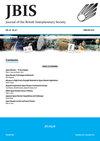英国载人航天的过去、现在和未来
Q4 Engineering
Jbis-Journal of the British Interplanetary Society
Pub Date : 2023-08-07
DOI:10.59332/jbis-076-06-0190
引用次数: 0
摘要
这篇论文提供了英国对人类航天(HSF)的兴趣的广泛回顾,涵盖了它的过去,现在和可能的未来。它着眼于国家利益的起源,从20世纪初英国科幻小说“梦想家”HG威尔斯和AC克拉克开始。考虑到如果政府在20世纪60年代至80年代更充分地投资于英国HSF活动,结果可能会是什么样子,报告指出,尽管存在积极的文化热情,但英国似乎受到了制度怀疑和政府缺乏财政承诺的阻碍——这种态度与其他发达国家(尤其是德国、法国和意大利)形成鲜明对比。随着2008年后政府对人类太空活动政策的突然逆转,英国更深层次的HSF参与现在似乎是可以实现的,这取决于足够的资金——ESA将在2022年选出三名新的英国宇航员候选人,这是一个非常积极的进步。该论文广泛考虑了人类和机器人探索(HRE)与国际空间站直接微重力研究的结合,以及即将在低地球轨道上建立的私人空间实验室,以及参与美国宇航局领导的“阿尔忒弥斯”月球探测的机会。后者可能涉及应用英国航天工业计划,可能包括月球导航和通信卫星建设,门户空间站服务,以及未来月球基地的潜在核动力源。在HSF的支持下,天基太阳能发电,扩大太空旅游活动,然后未来对月球和火星的探索可能随后是ISRU的开发和商业太空采矿。本文总结了HSF在空间研究和探索中的重要性和必要性,它的“物有所值”,潜在的长期未来以及HSF对人类作为航天物种的“大历史”的贡献。关键词:宇航员,人类航天(HSF),亚瑟·C·克拉克,欧洲航天局(ESA),英国航天局,蒂姆·皮克,阿尔忒弥斯,苏西,国际空间站,猎户座,阿尔戈诺特,月球基地,世界历史本文章由计算机程序翻译,如有差异,请以英文原文为准。
The Past, Present and Future of UK Human Spaceflight
This paper provides a broad review of the UK’s interest in human spaceflight (HSF), covering its past, present and possible future. It looks at the origins of the national interest, starting with the British science fiction “visionaries” HG Wells and AC Clarke from the early 1900s. Considering what might have been if governments had more fully invested in UK HSF activity during the 1960-80s, it notes that despite a positive cultural enthusiasm the UK appears to have been held back by institutional scepticism and a lack of government financial commitment - this attitude strongly contrasted with that of other developed nations, particularly Germany, France and Italy. Following a sudden reversal of government policy for human space activity post-2008, a deeper HSF involvement by the UK now seems achievable, depending on sufficient funding - ESA’s 2022 selection of three new British astronaut candidates is a very positive step-forward. The paper broadly considers the opportunities via the combination of human and robotic exploration (HRE) with direct microgravity research on the ISS and the forthcoming private space labs in LEO, plus participation in NASA-led “Artemis” lunar exploration. The latter could involve applied UK space industry initiatives, possibly including lunar navigation and communications satellite construction, Gateway space-station services, plus potential nuclear power sources for a future Moonbase. Space-based solar power with HSF support, expanding space tourism activity, then the future exploration of the Moon and Mars may then be followed by ISRU exploitation and commercial space mining. The paper concludes with a revue of the importance and need for HSF for space research and exploration, it’s “value for money”, potential long-term futures and the contribution HSF makes to the “Big History” of humanity as a space-faring species. Keywords: Astronauts, Human spaceflight (HSF), Arthur C Clarke, European Space Agency (ESA), UK Space Agency, Tim Peake, Artemis, SUSIE, ISS, Orion, Argonaut, Moonbase, World History
求助全文
通过发布文献求助,成功后即可免费获取论文全文。
去求助
来源期刊

Jbis-Journal of the British Interplanetary Society
Earth and Planetary Sciences-Space and Planetary Science
CiteScore
0.70
自引率
0.00%
发文量
0
期刊介绍:
The Journal of the British Interplanetary Society (JBIS) is a technical scientific journal, first published in 1934. JBIS is concerned with space science and space technology. The journal is edited and published monthly in the United Kingdom by the British Interplanetary Society.
Although the journal maintains high standards of rigorous peer review, the same with other journals in astronautics, it stands out as a journal willing to allow measured speculation on topics deemed to be at the frontiers of our knowledge in science. The boldness of journal in this respect, marks it out as containing often speculative but visionary papers on the subject of astronautics.
 求助内容:
求助内容: 应助结果提醒方式:
应助结果提醒方式:


